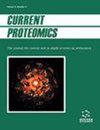LINC00839、LINC01671、AC093673和AC008760与透明细胞肾细胞癌的预后和免疫浸润相关
IF 0.5
4区 生物学
Q4 BIOCHEMICAL RESEARCH METHODS
引用次数: 0
摘要
透明细胞肾细胞癌(ccRCC)是最常见的肾癌类型,它是一个重大的全球健康问题,导致显著的发病率和死亡率。长链编码rna (lncRNAs)是一类在免疫系统中起重要作用的基因表达调控因子。然而,lncRNAs在ccRCC免疫微环境中的功能尚不清楚,长链非编码rna (lncRNAs)已被确定为一类在免疫系统中起关键作用的基因表达调节因子。最小绝对收缩和选择算子回归技术、稳健的基于似然的生存模型和Cox回归分析被用于识别潜在的预后rna。利用基因集富集分析和免疫细胞亚群分析分析了该特征与肿瘤免疫浸润的关系。选择LINC00839、LINC01671、AC093673和AC008760创建风险签名。对于3年、5年和8年的总生存率,训练集的受试者工作特征曲线下面积分别为0.689、0.721和0.719,验证集的风险特征曲线下面积分别为0.683、0.686和0.665。利用风险特征和临床特征构建模型和nomogram。模型在训练集的c指数为0.78,在验证集的c指数为0.773。利用基因集富集分析和免疫细胞亚群分析分析了该特征与肿瘤免疫浸润的关系。利用风险特征和临床特征构建模型和nomogram。风险信号反映了肿瘤当前的免疫浸润,并与调节性T细胞分化、白细胞介素17的产生调节、对抗原刺激的炎症反应的负调节以及IL6-JAK-STAT3信号通路有关。该研究为ccRCC患者提供了预后信息,也可能为未来的免疫治疗提供有用的线索。该研究的第一个主要优势是使用了更严格的标准(包括样本和lncrna)来提高研究结果的准确性和模型的效率。同时,使用多种计算方法来确保结果的有效性,包括单变量/多变量Cox回归、稳健的基于似然的生存模型和LASSO回归分析。其次,彻底分析样本的免疫细胞成分(不只是使用免疫评分),以建立更详细的肿瘤免疫浸润与风险特征之间的关系。第三,为了便于临床医生使用,已经创建了一个视觉上可识别的模型图。没有、本文章由计算机程序翻译,如有差异,请以英文原文为准。
LINC00839, LINC01671, AC093673 and AC008760 are Associated with
the Prognosis and Immune Infiltration of Clear-cell Renal Cell Carcinoma
Clear cell renal cell carcinoma (ccRCC) is the most common type of kidney
cancer, and it is a significant global health problem causing significant morbidity and mortality. Long
noncoding RNAs (lncRNAs) have been identified as a class of gene expression regulators that play a
critical role in the immune system. However, the function of lncRNAs in the immune microenvironment of ccRCC remains unclear
Long noncoding RNAs (lncRNAs) have been identified as a class of gene expression regulators that play a critical role in the immune system.
The least absolute shrinkage and selection operator regression techniques, robust likelihoodbased survival modeling, and Cox regression analysis were used to identify potential prognostic
lncRNAs. The relationship between the signature and the tumor's immune infiltration was analyzed
using gene set enrichment analysis and the subset analysis of immune cells.
LINC00839, LINC01671, AC093673, and AC008760 were selected to create a risk signature.
For 3-, 5-, and 8-year overall survival rates, the areas under the receiver operating characteristic curves of
the risk signature set were 0.689, 0.721, and 0.719 in the training set and 0.683, 0.686, and 0.665 in the
validation set, respectively. A model and nomogram were constructed using the risk signature and clinical characteristics. The C-index of the model was 0.78 in the training set and 0.773 in the validation set.
he relationship between the signature and the tumor's immune infiltration was analyzed using gene set enrichment analysis and the subset analysis of immune cells. A model and nomogram were constructed using the risk signature and clinical characteristics.
The risk signature reflects the tumor's current immune infiltration and is associated with
regulatory T cell differentiation, interleukin 17 production regulation, negative regulation of inflammatory response to an antigenic stimulus, and the IL6-JAK-STAT3 signaling pathway. This study
provides prognostic information for ccRCC patients and may also serve as a useful clue for future
immunotherapies.
The study's first major strength was the use of stricter criteria (both sample and lncRNAs) to increase the precision of the findings and the model's efficiency. Simultaneously, a variety of calculation methods are used to ensure the validity of the results, including univariate/multivariate Cox regression, robust likelihood-based survival modeling, and LASSO regression analyses. Second, the immune-cell components of the samples were thoroughly analyzed (not just using immune scoring) in order to establish a more detailed relationship between tumor immune infiltration and risk signature. Thirdly, a visually recognizable nomogram of the model has been created for clinicians' ease of use.
no avaiable
求助全文
通过发布文献求助,成功后即可免费获取论文全文。
去求助
来源期刊

Current Proteomics
BIOCHEMICAL RESEARCH METHODS-BIOCHEMISTRY & MOLECULAR BIOLOGY
CiteScore
1.60
自引率
0.00%
发文量
25
审稿时长
>0 weeks
期刊介绍:
Research in the emerging field of proteomics is growing at an extremely rapid rate. The principal aim of Current Proteomics is to publish well-timed in-depth/mini review articles in this fast-expanding area on topics relevant and significant to the development of proteomics. Current Proteomics is an essential journal for everyone involved in proteomics and related fields in both academia and industry.
Current Proteomics publishes in-depth/mini review articles in all aspects of the fast-expanding field of proteomics. All areas of proteomics are covered together with the methodology, software, databases, technological advances and applications of proteomics, including functional proteomics. Diverse technologies covered include but are not limited to:
Protein separation and characterization techniques
2-D gel electrophoresis and image analysis
Techniques for protein expression profiling including mass spectrometry-based methods and algorithms for correlative database searching
Determination of co-translational and post- translational modification of proteins
Protein/peptide microarrays
Biomolecular interaction analysis
Analysis of protein complexes
Yeast two-hybrid projects
Protein-protein interaction (protein interactome) pathways and cell signaling networks
Systems biology
Proteome informatics (bioinformatics)
Knowledge integration and management tools
High-throughput protein structural studies (using mass spectrometry, nuclear magnetic resonance and X-ray crystallography)
High-throughput computational methods for protein 3-D structure as well as function determination
Robotics, nanotechnology, and microfluidics.
 求助内容:
求助内容: 应助结果提醒方式:
应助结果提醒方式:


